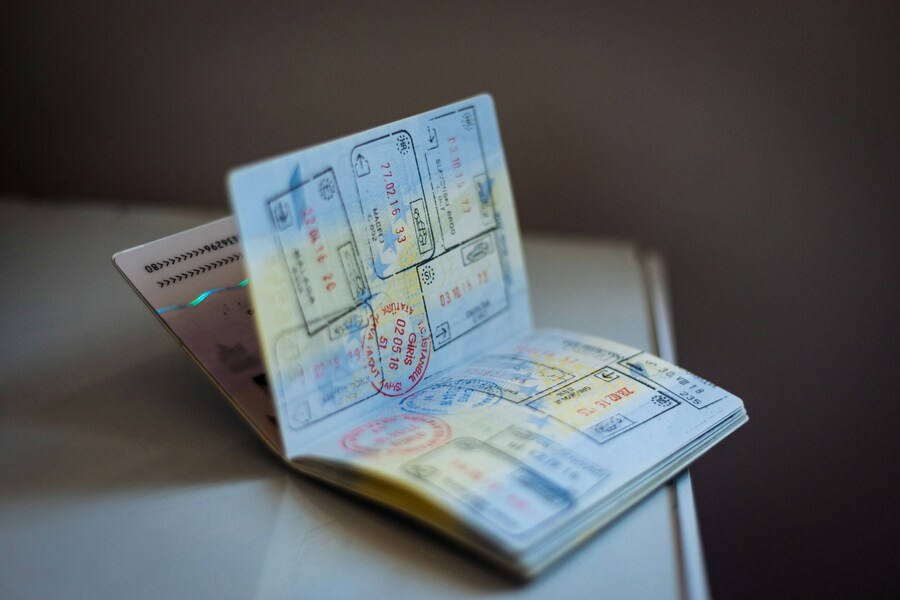Starting October 12, the EU will kick off a new digital border system that replaces passport stamps.
What does the EU's new entry system mean for your travel plans starting October 12?

Source: Global Residence Index/Unsplash
Soon, visitors heading to dozens of sought-after European destinations, including France and Spain, will be required to provide biometric data, such as a fingerprint or a face scan, to formally register their entry into the region.
This new initiative, known as Europe's Entry and Exit System (EES), is slated for a "progressive start" beginning October 12 at key airports and border crossings, according to official communications from the European Union. This gradual phase-in will allow authorities to thoroughly test and expand the new technology. The system will operate alongside the traditional passport stamping for a transition period, with full, mandatory implementation across all external borders not expected until April 10, 2026. This means that frequent travelers who typically use services like airport parking lot reservations or look for parking discounts before flying should plan for potential changes to their border experience well in advance of the system's final rollout.
Ultimately, the EES program will become a requirement for all non-EU nationals making a short stay – defined as a maximum of 90 days within any 180-day period – in the 29 participating European countries. This extensive list encompasses all but two EU members, including major nations like France and Spain, and all associated countries in the Schengen area, such as Iceland, Norway, and Switzerland. While all non-EU travelers are subject to the new requirements, a specific exemption has been made: children below 12 years old won't have their fingerprints scanned, though their photographic image will be recorded.
The European Union has clearly stated that the central objective of this extensive new program is to fundamentally modernize border operations, significantly enhance efforts to combat identity fraud, and more accurately and efficiently identify travelers who overstay their visas. The digital records containing personal and biometric data, which are created upon a traveler's first entry after the system goes live, will be securely stored for approximately three years. Crucially, the EU has emphasized that under strict data protection rules, this highly sensitive information may not be transferred to third parties.
In light of this imminent change in border procedure, the U.S. Department of State (DOS) issued a public advisory, notably on the social media platform X, warning American citizens to "expect new automated border checks and to have their biodata digitally collected upon arrival and departure." This early caution underscores the need for travelers to prepare for a more technologically advanced and possibly lengthier process during the initial phase of the rollout. For those planning a trip, taking time to organize logistics like securing competitive airport parking offers through sites like ParkingNearAirports.io can minimize other travel-day stressors.

Source: George Prentzas/Unsplash
The collection of biometric data isn't the only dramatic alteration the EES system will introduce. The core procedural shift involves the slow but certain elimination of manually collecting stamps in a passport book, a practice long cherished by travelers as a sentimental souvenir and physical record of their journeys.
"The EES will gradually replace passport stamps with a digital system that records when travellers enter and exit, making border checks faster and helping staff to work more efficiently," the European Union officially noted. The EU further clarified the anticipated benefits for travelers: "With EES, travellers will spend less time at the border thanks to faster checks, self-service options, and the possibility to give their information in advance." The shift is designed to create a more streamlined experience once the initial registration is complete.
The EES system was first publicly announced in 2023, with an original timeline that projected its debut for a full launch in 2024. However, owing to the massive scale and complexity of the technological and logistical integration required across all member states and external borders, the program's final launch schedule was subsequently delayed.
Beyond the European Union's initiatives, a parallel border control measure was recently implemented by the United Kingdom. Earlier this year, the U.K. implemented its own Electronic Travel Authorization (ETA) fee. This new authorization is now a required pre-travel clearance for the vast majority of international visitors arriving in the country, including all travelers coming from the United States.
Similarly, in the United States, technology-driven security enhancements have been expanding for years. Travelers who apply for popular expedited security programs like TSA PreCheck and Global Entry must also provide fingerprints for their necessary security scans. Moreover, private-sector services, such as Clear Plus now utilize sophisticated fingerprint, eye, or facial scans to help enrolled travelers move through key checkpoints at airport security with greater speed and efficiency.






